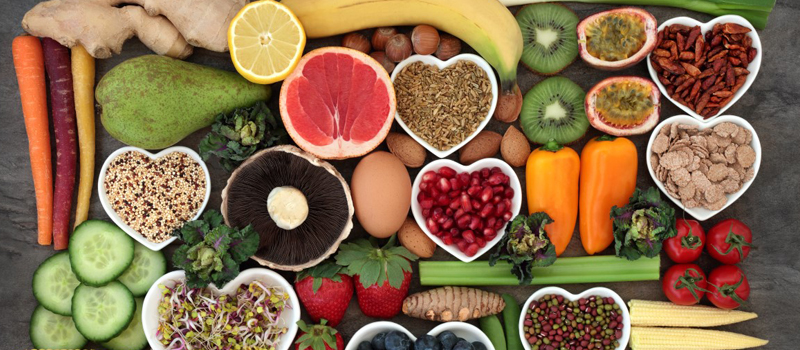Let me say this upfront, I am not a medical doctor, nor a nutritionist, or a dietician by any stretch of the imagination. Everything I have placed in this article section is straight from the general layperson perspective and what education about anything (and in regards to nutrition) that I have gathered has been through industrious study and constant curiosity that drives me to find out more.
That said, here’s what I found.
Overall Nutrition 101: What Is Bio-Availability?
So when it comes down to it, in any survival scenario just getting something down your gullet is an accomplishment no matter the nutritional value at all. But, in many aspects you do need to have in mind and plan for (search out, gather, store, and compile) as to what you are fueling your body with. Yes it is true, that a car can run on watered down gas but over time it will do more harm than good to the machine. The same holds true to our organic machines with which we have been born.
So to have in your plan or storage a higher amount of what is called empty calories is not the wisest move in your self-sustaining efforts. Things like Ramen noodles, mac-and-cheese, canned stew, and sugar-laden desserts, with nary a whole macro or micro ingredient in sight is short-sighted at the least and and at most will short circuit your long-term health.
Bio-availability is how easily the body can use a specific nutrient i.e. proteins, carbohydrates, lipids, vitamins, minerals and water. Once a protein, for example, is digested and broken down into its component amino acids, a certain proportion of those amino acids are effectively absorbed through the small intestine and moved into the bloodstream. Bioavailability can then be tested by measuring the presence of amino acids in the bloodstream.
A Lesson in Bio-Availability
Human nutrition is complex and for optimum health, we must consume the right portion of nutrient sources. The only way to make sure you’re taking in enough high-quality nutrients is to eat plenty of the appropriate whole foods that contain the desired fuel for your body.
When you eat heavily preserved foods, your body can’t break them down to use the nutrients in them (if there are nutrients left, after all that processing in the first place.) This is called “bio-availability.” Compare the ingredients of a pack of Ramen noodles with a pack of plain pasta. Or a steak to a hamburger from a fast food joint or dried fruit with the potato chips on aisle 7. And you’ll get a better idea of what it means by empty calories.
The Acids, Preservatives and Additives are creating an imbalance
Processed food isn’t geared towards nutrition, it is engineered to stay “fresh” til the Good By Date. The Sodium Tripolyphoshphate, the hydrogenated oils, the high-fructose corn syrup and a few dozen more chemicals that are used that do not happen naturally in food are being used IN the frozen dinner, or the Micky D’s burger or the slimey hotdog spinning on the heater at 7-11.
Do you see how it is impossible for the digestive acids in the body to break down those foods? They remain recognizable most of the way through the system until they are ready to be excreted. This means that the few nutrients that may be present are not made available. This is the reason that North America is full of malnourished fat people – those who rely on processed food must consume far more of it in a vain effort to get the nutrients they need. They crave food because their body is crying out for vital components. Think about what the aftermath of a disaster would be like, and then think about facing these challenges with Ramen noodles and a bag of Cheetos.
The Better Quality of Nutrients the Better Chance of Absorption
Your dietary nutrients intake should primarily come from a variety of whole foods to ensure that you consume other important nutrients. Protein should also come from sources with high bio-availability so that your body can use most of the protein they provide.
Animal-Based Sources With High Protein Bio-availability
These are excellent complete protein options you can add to your diet:
- Grass-fed red meat, especially beef, is high in amino acids and healthy fats, as well as a variety of other important nutrients like iron, vitamin B12, and zinc.
- Poultry, such as chicken and turkey, preferably free-range, is low in carbohydrates and fats.
- Wild-caught seafood, particularly oily fish like salmon, tuna, and mackerel. Wild fish have more natural and varied diets and are free of the antibiotics routinely given to farmed fish.
- Game, such as venison and pheasant, is lower in fat and naturally grass-fed.
- Whole eggs can give you up to 6 grams of digestible protein from one medium egg, but if you’re concerned about cholesterol, egg whites work well too.
- Dairy, including butter and cheese, are good sources for those who can tolerate lactose. Cottage cheese is especially high in slow-digesting casein protein, providing longer-term effects such as sustained muscle growth and repair overnight, when eaten before bedtime.
Here Are the Issues You Will Face That Require Readily Available Nutrients in the Future
High Energy Demands on the Body
This goes hand-in-hand with heavy workloads below, but the nutritional requirements are a bit different in those times of upheaval. Instead of a sedentary lifestyle or job force behind desks and gawking at computers, you will have to be on your feet and thinking constantly to make every active moment count. Think about those times when you did do some outdoor work, or went hiking or spent the day at the amusement park. Do you recall how tired and hungry you were that day? You probably wouldn’t have been satisfied with a bag of pork rinds, right? If you’re anything like me, you wanted a good hearty dinner, like steak complete with veggies and a baked potato. Your body was craving the fuel it needed to replenish itself. Now, think about clearing rocks from a field manually, or hoofing it through the back country. Such high energy demands will require high-quality nutrients daily.
High Stress Levels
Life can definitely be stressful in the most normal of circumstances. Add the scarcity factor to food, water, or safety and those levels of stress can go sky high. Prolonged stress is a physical state that can put you at risk for all sorts of medical problems. When one is under stress, the body releases the hormone “cortisol” which can absolutely wreak havoc on the body. Cortisol, however, serves a very important purpose: it inhibits the production of insulin and floods the body with glucose to provide energy for a fight-or-flight response. This is bearable for the short term spurts, but when it’s dispensed over an extended period of time, it can cause blood sugar issues, diabetes, weight gain, and gastrointestinal problems. Along with depressing the immune system that gives you all sorts of more problems to deal with.
Here’s what has happened inside your body when stress is introduced to you for a longer period of time: Cortisol functions to reduce inflammation in the body, which is good, but over time, these efforts to reduce inflammation also suppress the immune system. Chronic inflammation, caused by lifestyle factors and habits of poor diet due to stress, helps to keep cortisol levels soaring. An unchecked barrage on the immune system responding to unabated inflammation can lead to a myriad of problems: an increased susceptibility to colds and other illnesses, an increased risk of cancer, the tendency to develop food allergies, an increased risk of an assortment of gastrointestinal issues (because a healthy intestine is dependent on a healthy immune system), and possibly an increased risk of autoimmune disease.
Now, take all that to a catastrophe scenario. There’s no question that stresses are going to happen, and as mentioned if it is periodical or in short spurts then you are going to be ok, your system can regain it’s balance in most respects. How we cope with these stresses, the mental crutches we use to get ourselves through can put our health at risk. You don’t want to load up on foods that exacerbate blood sugar issues because of high, empty carbohydrates, or foods with high levels of sodium that will increase your blood pressure and thus your risk of heart attack or stroke. And that is if you can find the food to use as a coping mechanism.
And if what is happening is months long, years long or longer and the thriving you once had turns into a surviving set of actions on a daily basis, the stress will remain. In a potentially post-civilization crumbling world, you must also consider that a lack of modern sanitation will lead to more disease. It is possible that less medical care will be available in the near future, as the economy continues to collapse upon itself. You may not be able to rest and recover, which could lead to a minor illness becoming very serious. A strong, well-nourished immune system will help to fight off illness and keep your family healthy.
Heavy Workload
Most of us aren’t accustomed to a day filled with heavy physical labor. In fact the last two generations, I dare say, have been as “physical labor” free as any other generation in history. Modern conveniences have done their job and lightened the load for many in the 1st world. Generally speaking, the individual does not need to wake up each day and worry where food or any type of sustenance can be had. They usually don’t have to break their back to get the basics in hand… no plowing fields, no handpicking of produce, no carrying buckets of water from the nearby river.
Few of us are physically fit enough to just jump into the back-breaking lifestyle, ready to rock and roll. Now, imagine, trying to do this fueled only by a box of empty carbohydrates and sugars? If you are using your muscles, they’re going to demand fuel in the form of protein. Protein is vital for repairing the damage done to muscles during heavy physical activity. If you supply your body with proper protein after a bout of physical labor, you’ll be rewarded with a stronger body. If you try to fuel heavy lifting with empty carbs, you’ll be provided a short burst of energy, followed by a crash of complete exhaustion. Your body will actually cannibalize itself searching for protein for the muscles.
Smart Nutrition Goals
To offset the health decreasing circumstances around, can be done by being smart in what you eat, AND what you bring in to store for later use. Research, look for, acquire, and build up those methods of storage for those foods that have the nutrients your body needs on a regular basis. You might start by setting a longer-term goal like keeping your cholesterol low, blood sugar balanced, or blood pressure at safe rates, or reaching a healthy weight and physical strength. But don’t stop there. Break that down into smaller, short-term goals that tell you exactly what you need to do each day or week when the going is still getting good. Then, track your progress against your longer-term goals each week or month, depending on what makes sense for you. The examples below may help get you thinking.
Protein
- Strive to have at every meal, a quarter of the plate that is filled with healthy protein
- For at least two meals a week, replace meat with a plant-based type of protein
Protein supplies the body with the essential amino acids it needs to build its entire structure, from cells and hormones through to one’s bones, organs, and muscles. It also transports nutrients throughout the body, gives energy, and helps a person stay focused. And if your goal is weight loss, it keeps you feeling full so you don’t crave snacks all day.
You can get protein from animal products like beef, chicken, fish, eggs, or dairy, or from plant sources like legumes, quinoa, hemp, and chia seeds. If you’re struggling to get enough protein, consider supplementing with a high-quality protein supplement in your storage shelves, like a Whey Protein or Kaged Muscle Plantein. Both of these supplements contain Ingredient Optimized protein, with enhanced absorption so it delivers optimal nutrition.
Fruits and Vegetables
- On weekdays, fill at least half of the supper plate with fruit and/or non-starchy vegetables at every meal
- Snacks, can be based on fruit or vegetables
While some are more nutrient-packed than others, all fruits and veggies are excellent sources of a wide range of vitamins and minerals, which support many aspects of one’s health. They’re also high in all-important fiber, which keeps the digestive system working well.
Try to eat a selection of fresh fruits and veggies over the course of the day to make sure you’re getting all the nutrients you need — eat the rainbow, as the saying goes.
Whole Grains
- For four meals a week, replace starchy vegetables like potatoes with a healthy whole grain, like quinoa or brown rice
Whole grains should make up a quarter of a dinner plate. They are fiber-rich carbohydrates that give energy, lower cholesterol, and keep digestion working as it should be. They’re also excellent sources of the B vitamins, which support brain function, as well as other important nutrients. Look up how to cook interesting whole grains like quinoa, bulgur, amaranth, or brown rice, and experiment to see what you like.
Building Your Food Sources through Wild Edibles
Now with that list above, you don’t have to gather those life-sustaining items found just in the grocery store aisles. In fact, it is better for you in the long run to be able to diversify your sourcing. Study and learn what is growing in your area out in the woods, in the mountain forests, or in the greener parts of the deserts. No matter where you live and the climate you find yourself in, you can gain the knowledge and the know-how (solidified with real-time experience) what can be gathered and stored for your daily sustenance.
By doing so, becoming familiar with the local fauna and plant life you will be able to eat better than others when the store shelves are bare and the first round of food storage starts running dry.
Build Your Food Supply to Meet These Challenges
Stock your pantry with whole foods that the body can break down through ordinary digestive processes. Look for items that have less than 5 ingredients (that’s including all the preservatives and additives in modern processed food), all of which are easily pictured in your mind’s eye. If it is a long and exhausting chemical name, generally it is something you should shy away from.
Keep a wide variety of macronutrients. Your body requires protein, carbohydrates, and fat to function optimally, as well as a variety of vitamins and minerals. Your stockpile should contain a wide variety of food in order to supply these nutrients, with varying storage timeframes. It is important to stock whole grains, fruits and vegetables, carefully sourced meats or other protein rich items, and healthy fats.
Create or buy the best storage foods you can afford. The long-term storage aspect can make it challenging to have good sources of all of these nutrients. But using home preservation, purchasing the best quality foods you can find, and producing some of your own food can help make your supply far more nutritious.
Your Pantry’s Bio-availability is Your Lifeline
In a chaotic crisis situation, your food storage pantry will become your lifeline. And reclaiming your food independence is imperative to do before that crisis hits. As you begin producing your own food to be less dependent on the corner grocers, you will find that your confidence in providing for yourself grows and the peace of mind you crave comes more easily. The production of one’s own food is a culture shock all on its own. Cooking from scratch, once common place with our grandparents are absolutely not nowadays.
Think about the tremendous amount of work that goes into a loaf of bread, a mess of pasta or bunch of noodles, from seed to flour. Now, think about trying to perform that kind of hard manual labor with, no beforehand knowledge, or practice while suffering from inadequate nutrition. And imagine if we want to do things for meat, or a vegetable or fruit or greens that we need for sustenance? If we call upon our bodies to do the hard stuff, we must properly fuel ourselves.
Also consider, eating as healthily as possible will help you prevent most of the diseases that will come in a post crisis world i.e. lack of sanitation, of growing methods, of storage and distribution. It is possible that less medical care will be available in the near future, as the economy continues to collapse upon itself. A strong, well-nourished immune system will help to fight off illness and keep your family healthy.
Many people make the mistake of building a food supply merely meant to keep their stomach full and from growling in hunger. That mindset could help you to survive a short-term disaster. But if a crisis situation turns into a different a way of life, you will need a food supply that feeds and nourishes the systems of your body, not just one that keeps hunger at bay. You must prepare to fuel yourself for building a new, more self-reliant lifestyle. Otherwise, once the noodles run out, so will your hopes of survival.
Overall TakeAway
Even now, it is wise to optimize your health with the most bio-available food, make sure you understand which sources give you the best return on your nutritional investment. Plan also to do that when it isn’t the most convenient to do so in times of crisis as well. Knowledge is truly powerful.
Be able to be rest assured that whatever may happen you will have and know the best ways to keep your tummy from rumbling, in the most healthy ways possible. Choose now, don’t wait for the hard times to hit, get into practicing good eating habits from the nutrients you need to stay healthy and physically fit. When it comes to food storage and survival nutrition, sure, a degree of compromise is in order. But, at the end of the day, wouldn’t you rather lean toward the healthier and more physically sustainable food-source?






